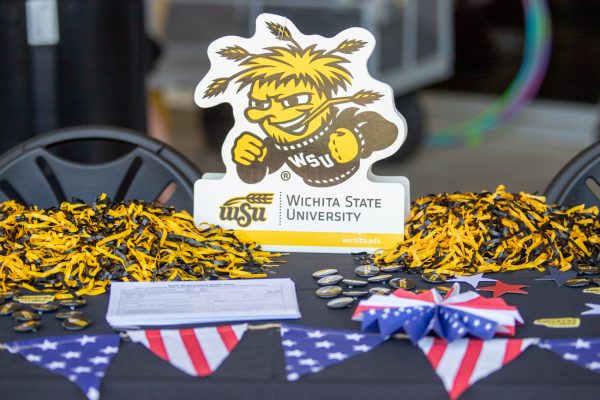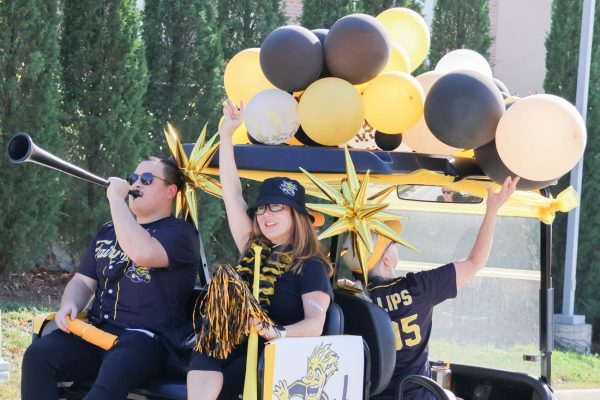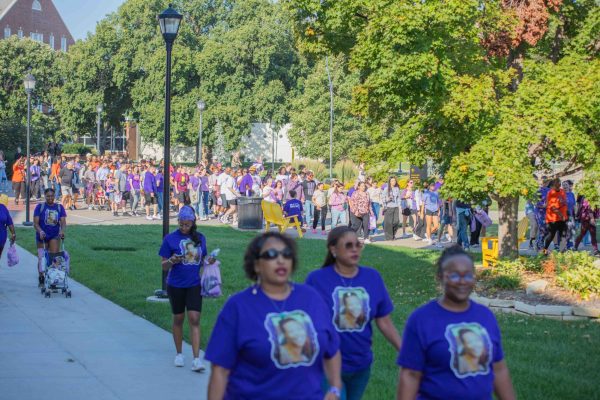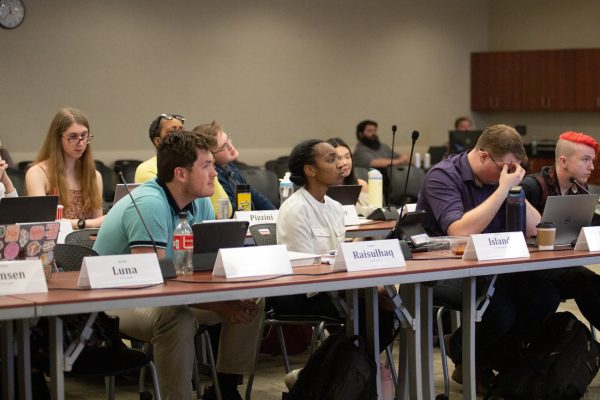Bots, wearable devices, printers highlighted in Technology Fair
Onlookers watched as junior Joel Trembly gradually moved the Romer arm scanner over a small, plastic object with curvature, holes and raised levels. An instant render of the scan appeared on a laptop next to the arm as Trembly scanned the object.
Becky North, the primary organizer of the Technology Fair, beckoned a passive student to come closer while Trembly explained the workings of the Romer arm.
The Romer arm was one of about 50 devices presented Tuesday at the fifth annual Technology Fair.
The fair “takes [the technology] out of the class and office and puts it here for everyone to see,” said North, who could be found roaming the fair and listening intently to various booths.
North said the motto of the fair was “discover it, solve it, share it.”
The fair grew out of the faculty-led “Learn More” series in which faculty and staff would share a specific topic, North said. After a few years, North and the Unclassified Professional Senate — a group that gives a voice to about 950 unclassified professional employees on campus — asked themselves how they could make the event into a larger experience and include students.
From there, the Technology Fair was created.
The first fair five years ago had 20 booths in the ballroom of the old Rhatigan Student Center. Four years later, the fair now has more than 50 representing both student and faculty research.
The fair showcased a ping-pong robot, new technologies at the library, new cosmetics for the myWSU portal and even had booths for various businesses that worked with WSU, like the National Institute of Aviation Research.
NIAR’s booth showcased four different technologies, one of which included the Romer arm Trembly and senior Cody Stallbaumer were in charge of presenting Tuesday.
Trembly said the purpose of the arm, which is physically arranged much like a human arm, is to scan parts, remodel them using CAD software and then print the new model with a 3D printer. He said it was even possible to scan old, rusty car parts and then reprint them in order to get the car back together.
A 3D printer can print parts that can’t be made with a computerized numerical control (CNC) machine because 3D printers are always adding material, but CNC machines are always subtracting, Trembly said. They’re even capable of printing aluminum, stainless steel and titanium.
Stallbaumer said NIAR is using Romer arms and 3D printers to scan the parts of an aircraft seat, modify it in CAD so it’s optimal and then see how it works in a crash.
The other two devices at the NIAR booth were a zSpace and an oculus rift.
Similar to a computer monitor, the zSpace has an augmented display that uses stereoscopic technology to allow the user to see 3D and requires the use of glasses, said senior Eric Corey, who was in charge of the zSpace and oculus rift section of the booth.
Corey said the zSpace has a lot of potential for use for things like model previews of a product or running a CAT scan on a patient and then using the zSpace to simulate a dissection beforehand.
“It’s hard to define a list of things when you can do anything to it,” Corey said.
There were actually two oculus rifts at the fair — one at the NIAR booth and one at a human factors booth. Both had a roller coaster simulation, but the NIAR booth also allowed the user to tour a virtual representation of the millennium falcon.
“Look at the cool things we have on campus today,” North said, “Together in one place, regardless of college or discipline.”








